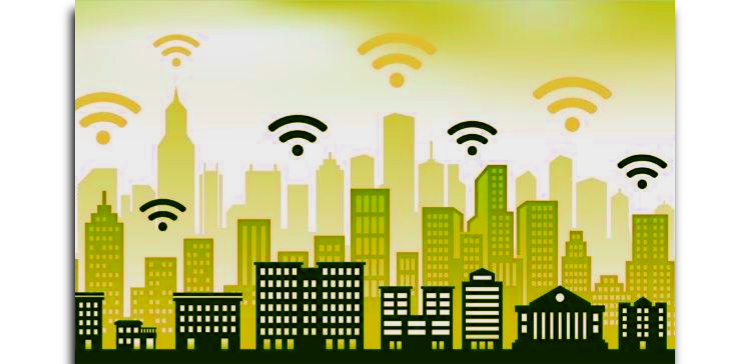Whether you use public transportation to travel to work or just want to stay connected to your social network, WiFi onboard is becoming more important than ever. Some companies have taken advantage of this technology to draw in customers.
Other places offer free WiFi as a way to draw in tourists. While free WiFi on public transportation is still relatively limited, it is a great way to keep in touch while on the road.
In this article, we look at Routers used in public transportation and Data collected from onboard WiFi.
Onboard Wi-Fi connects passengers to the world
Onboard Wi-Fi connects passengers to each other and the world at large. The demand for quality inflight Wi-Fi is growing globally. Last year, more than two-thirds of passengers chose to use the service.
However, this demand significantly outstrips the supply of inflight Wi-Fi available on airlines’ fleets. Only about half of those who opted for the service have used it before.
While video streaming is previously prohibit on Gogo WiFi, inflight Wi-Fi has now been added to most airlines. Today, passengers can stream video, surf the web, and work. It is even possible to play games live and collaborate with friends and family on the ground.
Streaming movies, music, and social media is now possible onboard Starlink flights. In fact, passengers can plan their Hawaiian vacation from the comfort of their seats, using onboard Wi-Fi.
Cost-benefit analysis of providing WiFi in public transportation
Providing free WiFi in public transportation may seem like a small change, but the positive effects on ridership are immense.
According to Ericsson research, 48% of people in New York City and 40% in London use the internet while traveling. Approximately 70% of those people send text messages.
In addition, the additional capacity may encourage more people to use public transportation, which could increase the amount of revenue generated.
The implementation of free WiFi on board public transportation will not only improve commuter satisfaction, it will also increase sustainability. Passengers can use the network to browse the web, watch streaming videos, communicate with colleagues and friends, or even watch online streaming movies.
Providing WiFi roaming solution in public transportation will improve the lives of those who use the service every day, and it will reduce traffic congestion and air pollution. There are several other benefits with providing free WiFi in public transportation.
Routers used in public transportation
Routers are critical components of public transportation. They connect data networks so people can transfer it from one route to the next and ultimately reach their destination.
The emergence of new modes of transport such as buses, trains, and carpools has made this task even more challenging. Several mobility simulation platforms have been developed in the past decade that can model public transport decisions based on time, cost, and the number of passengers.
One such platform is MATSim, which enables public transportation planners to consider on-demand shared and private door-to-door services. These platforms take into account interactions among agents as well as waiting times.
These vehicles require fast broadband connectivity to improve passenger services and increase fleet monitoring. A 4G mobile router in a public transportation vehicle delivers on-board WiFi, infotainment, and real-time data for fleet monitoring.
Moreover, a high-speed Internet connection enables vehicles to receive live CCTV and transfer bulk data for maintenance. A new public transport WiFi solution based on 4G mobile routers and Virtual SIM technology simplifies in-vehicle application deployment and management.
Data collected from onboard WiFi
Onboard public transportation WiFi networks must be able to support hundreds of unique users per day and switch between multiple network base stations. Switching between networks can be complicated, especially when the vehicles are moving.
To keep passengers connected, public transportation WiFi systems should support both high-capacity and low-bandwidth connections. In addition, onboard WiFi networks must have strong encryption to protect against hacking.
This article outlines some of the challenges and benefits of public transportation WiFi.
To date, very few mobility studies have fully exploited the information contained in the Wi-Fi access point SSID.
For example, a study by Ericsson found that 48% of passengers in New York and 40% of passengers in London browse social networks while riding public transportation.
A further study revealed that 74% of commuters send texts messages. Such data is vital to maximizing Wi-Fi onboard services in public transit systems.
Problems associated with providing WiFi in public transportation
Free public transportation WiFi is a welcomed addition to a busy commuter’s journey. With the increasing use of personal electronic devices, it is important to ensure that customers can connect to the internet during their commute.
Studies have shown that over 60% of commuters on intercity bus lines use a personal electronic device. Providing free internet access improves customer satisfaction and encourages frequent riding. However, providing free WiFi in public transportation has its problems.
While free Wi-Fi is an important advantage of public transportation, it has many drawbacks. For one, there’s a high cost and difficulty in deploying a wireless network in a moving vehicle.
Another issue is coverage. For example, buses can’t be park right in front of homes and are often blocked from high-bandwidth activities.
And, while providing free WiFi in public transportation is a desirable feature, many transit systems are hesitant to adopt the technology for several reasons.























![To Increase YouTube Subscribers Must Use These Service Provider [New]](https://businessleed.com/wp-content/uploads/2022/11/To-Increase-YouTube-Subscribers-Must-Use-These-Service-Provider-New-360x180.jpg)














